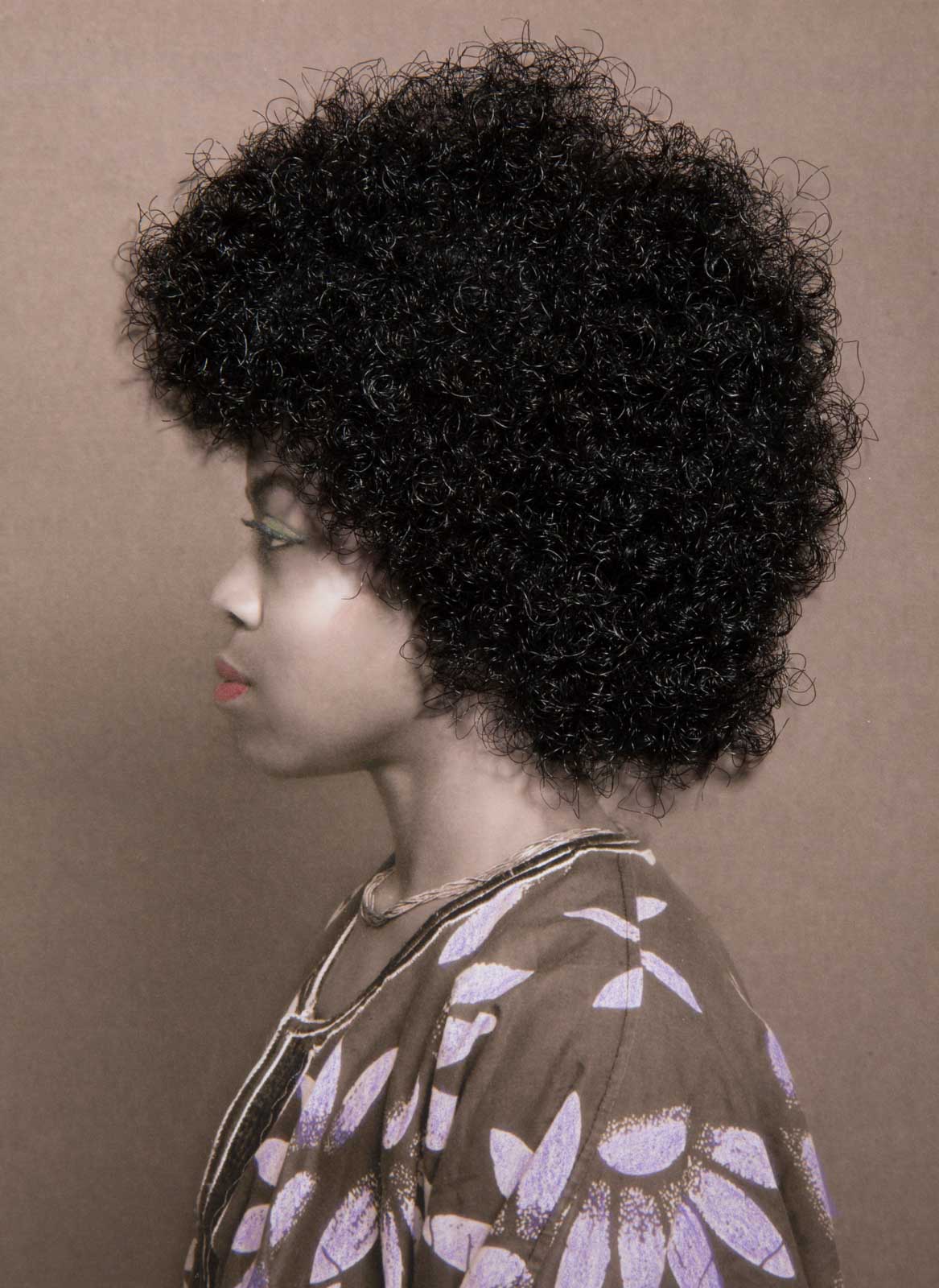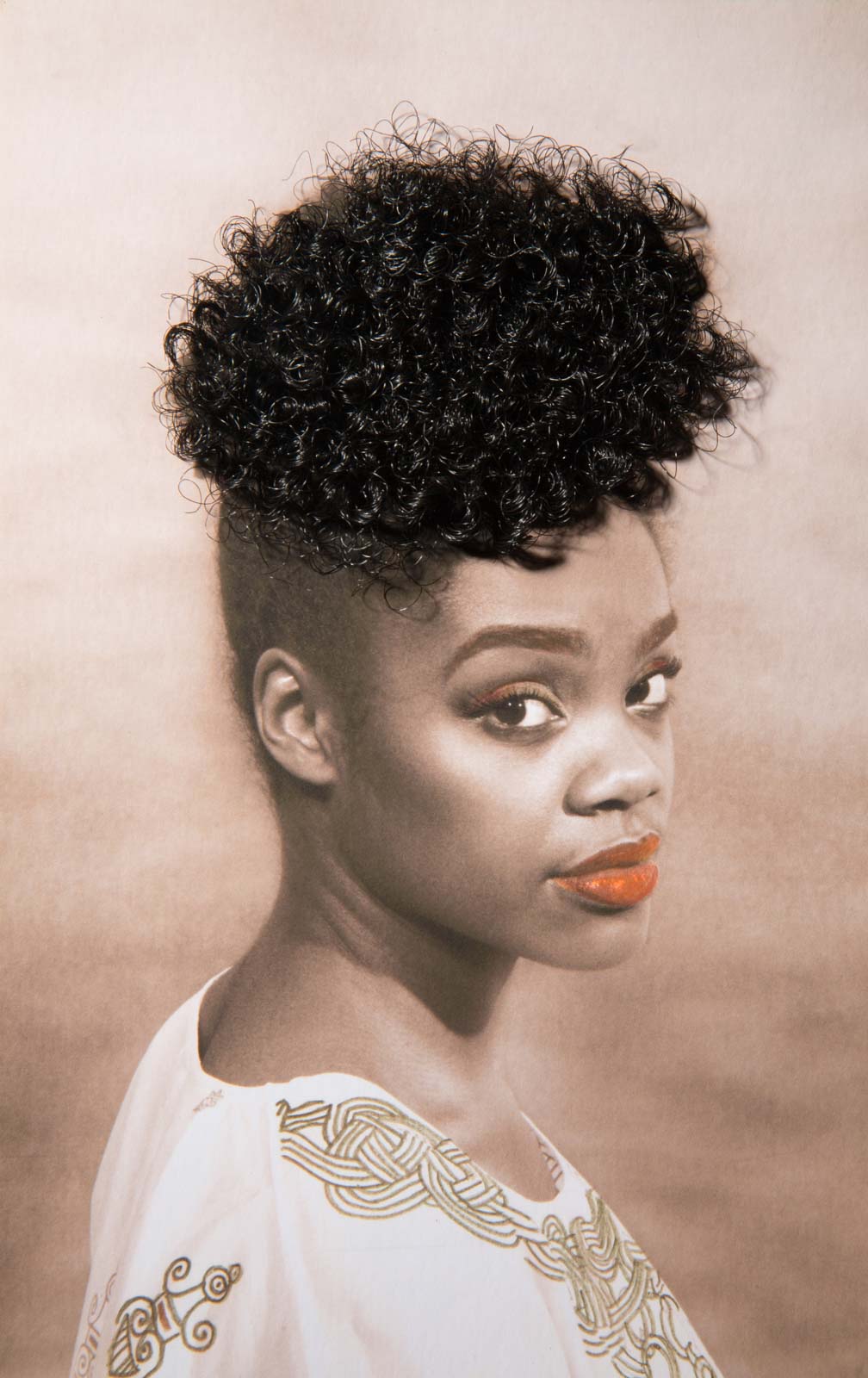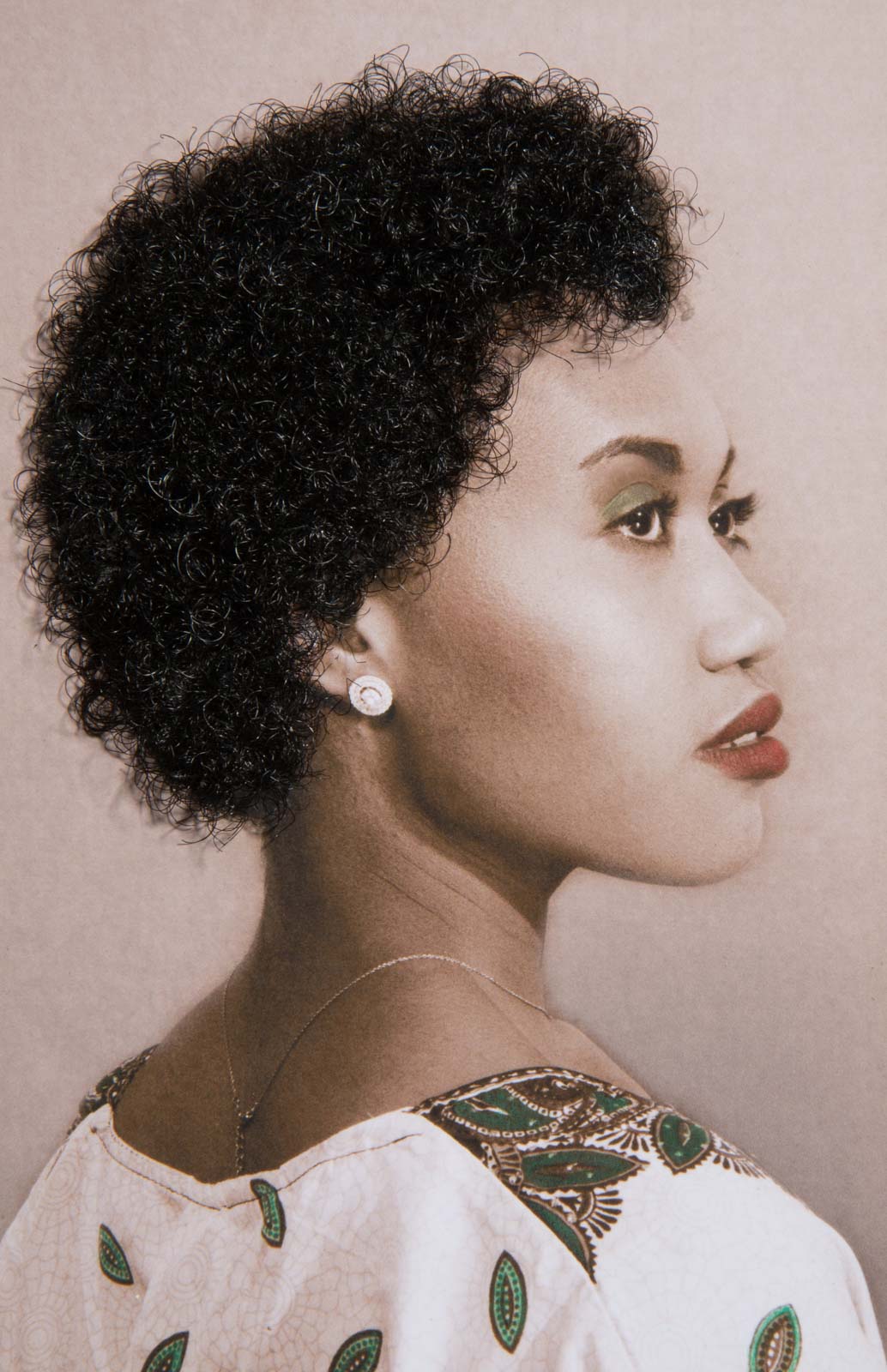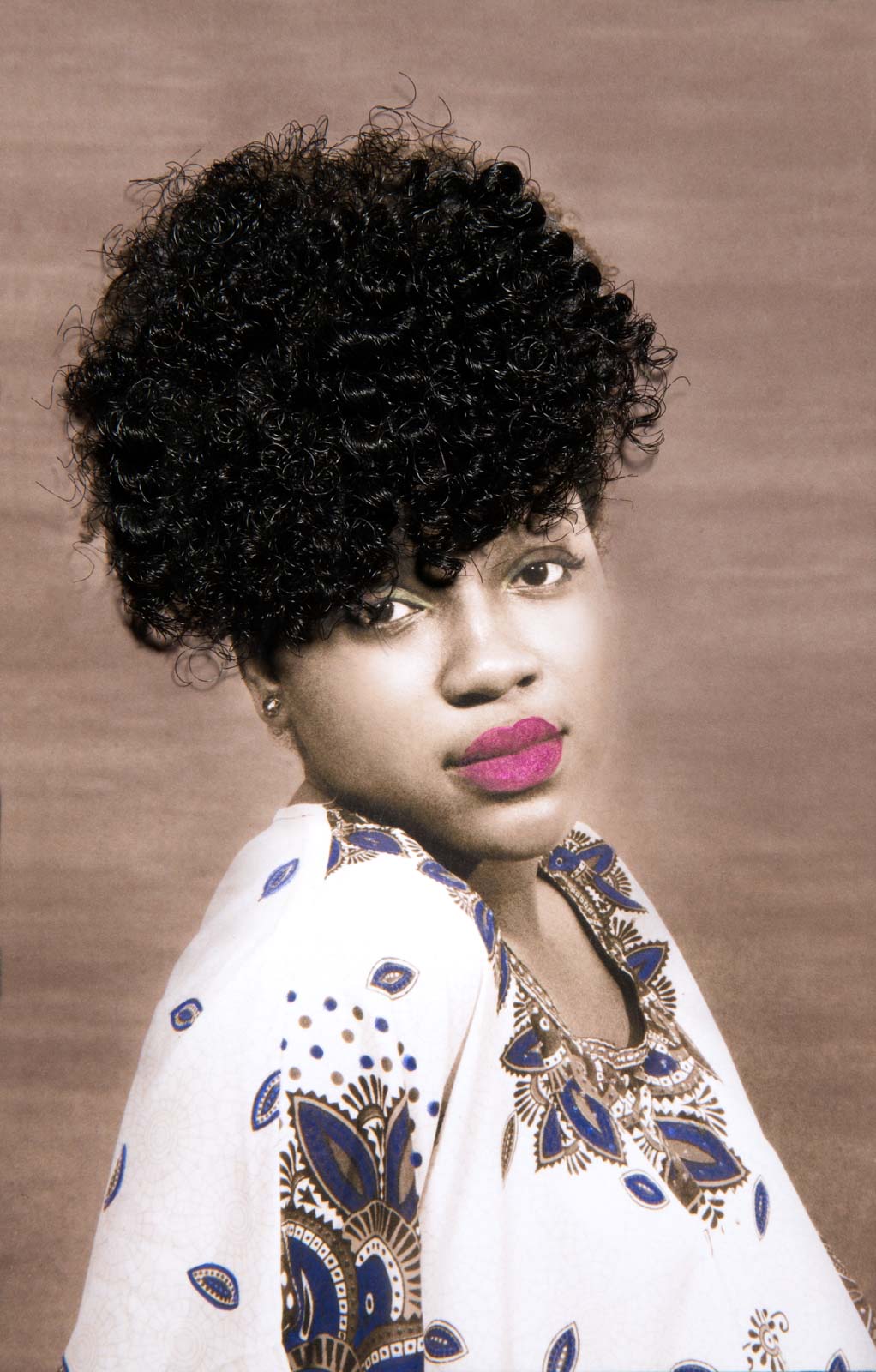
Traces of Ebony Julisiah Toney Mixed Media Archival Pigment Print Approximately 4 1/4″ × 3 1/2″ 2016 (Chicago)
This series is a tribute to black women and the beauty and virtue in our hair. The imagery is inspired by a 19th century tradition, that excluded women of color; Carte de visites in which women would adhere pieces of their hair to the card for a loved one or others to receive.
By creating these images, I hope to honor those women whose beauty was not acknowledged, as well as express the magnificence that is black women.
Julisiah Toney obtained a BFA at Savannah College of Art and Design, major in Photography, and minor in Business and Entrepreneurship. A Chicago native, she feels most at home in the city and is currently located in Atlanta. She loves to create using her hands (i.e. collage, mixed media, and alternative photography), but also is skilled in computers arts as well, incorporating Photoshop and other programs to enhance her craft. Most her of her work is introspective, but she uses this theme to create connections to women of color. She works freelance, plans on becoming an educator and ultimately own a gallery that supports and focuses on the works of people of color.
Interview of Julisiah Toney
From Chris Rock’s documentary Good Hair (2009) to Solange’s song Don’t Touch My Hair (2016), we understand that hair for the Black community is more than just appearance. It is a multi-million-dollar industry, a struggle in disrupting euro-centric beauty standards, as well as a declaration of self-loving pride. Your work, Traces of Ebony (2017), tells a similar story, can you tell us how this project come about? What were the materials that you used in these works, was it a complicated process? The origins of my work have always been self-rooted. I was and continue to question why and how I move through the world the way I do, and being a Black woman is the foundation. I didn’t grow up around seeing many women or peers with the same kinky curly hair as mine, that comfortably and confidently wore their hair naturally. I did not begin to dissect why I didn’t feel comfortable wearing my hair in its natural state until I moved Atlanta. Here all of my friends wore their natural hair, and I began to notice and admire their confidence. As I tried to come up with the roots of why I felt I couldn’t be as confident as my friends were in their natural state, I thought of my experiences growing up and wanted to blame it on my ignorance. However, I was influenced to dig deeper, because that mindset I had come to adopt, had to come from somewhere as well. Looking at media, ads, and other dominant portrayals of beauty, it is easy to see that black women aren’t shown as the most desirable. Being a young Black woman trying to figure out this influence of lack of self-love for my hair, I soon realized it was due to comparison to White/Euro beauty ideals, not on a conscience level, but one that was subconsciously rooted over my lifetime then. As I was exploring how to portray my new-found dignity, I began adhering hair to portraits of Black women. While further exploring this process. My attention was brought to a “custom” or trend as we may call it today, from the Victorian era called carte de visites. These were small calling cards that people would share and became in circulation in Europe and the United States. As you can image people in these photographs portrayed the ideal beauty standards at the time. Taking the trend a step further, women started to adhere hair to their calling cards. Carte de visites in this fashion with black women’s hair was not seen. After discovering this historical trend and realizing that this was one of the roots to the lack of black beauty portrayals, I decided to remake this trend to include black women to celebrate our beauty and especially our hair. The style, tone, hand colored portions as well as the hair adhered to the portraits of my friends, are to evoke the memory of black women from that time. To remember that their presence and beauty existed, and that it still exists today.
In contemporary art photography, we are seeing a rise in the portrays of bodies of colors; how do you understand this phenomenon? Why is it important for people of color to be shown through the lens of art photography? Touching back on the point of the start of the carte de vistes, photography has had a hand in shaping our lives in society. When photography began to be redistributed and became representative of portrayals of idealism, you can see that Black bodies and bodies of color have been misrepresented as well as under-represented. Although the concept of equality should be easy to grasp as a human right, that right has been withheld from people of color over the course of history. I think photography as well as other media is a tool to relay messages to people. Therefor the rise in the portrayal of bodies of color is to show their existence, show their experiences, show their ideals of beauty, and anything else that is true to them; To no longer be seen through a White/Euro gaze then regurgitated as truth. During this pandemic, have you able to produce any new work? What have you learned, as an artist, to face a global epidemic like this? Interestingly enough, this pandemic has caused me to be able to begin creating work again. As the pandemic progressed, and things became more out of my control, I found time as well as a will to create, without having a clear goal or message prior. I’m still not sure what to make of, or what the project I created during this time is saying, but I’m ok with that right now. For me as an artist, this time has shown me that you might not know how or why you are creating something at the time, but this is ok. Life has a way of taking you out of your comfort zone either way, so just do what you can in the moment. In the wake of Gorge Floyd’s death, most non-Black Americans have finally joined the Black Lives Matter movement to demand justices and defeat systematic racism. As an artist of color, how does this rise of BLM movement nationally, even globally, affect your art practice? Honestly it doesn’t really change much for me and the work that I do or will do. I hope that people continue to fight and seek justice for the death of George Floyd, Breonna Taylor, and the heart-breaking number of Black women and men who have lost their lives as a result of systemic racism, and not let the cycle continue and begin to undo it. I hope my work can aid in the true and positive representation of Black women, and ultimately spark a change in mindset to those who don’t know of the Black experience, and/or have been given a false and warped depiction of what it is to be Black.






